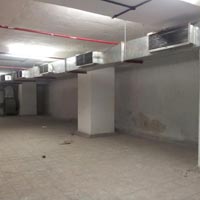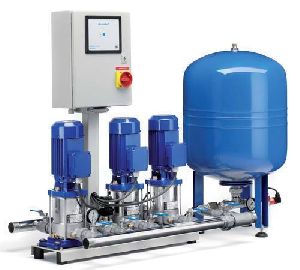
Ventilation Systems, Pressurization Systems
Get Price Quote
We are offering ventilation systems, pressurization systems etc. These systems are designed based on the area to be ventilated, heat load, number of persons in the area, type of roof, number of doors and windows for various types of industries, basement of malls to bring about desired number of air changes per hour and consist of providing fresh air supply blowers fitted with inlet filters to supply filtered air distributed through dustings controlled through grills and effectively exhausting out foul air. these systems can be provided along with evaporative cooling arrangements

Water Ring Vacuum Pumps
Get Price Quote
True Vacc Water-ring vacuum pumps are rotary pumps using water as sealing fluid. It basically consists of cylindrical casing with control disc on either sides. Inside this consists an eccentrically located balanced impeller with curved blades. The liquid introduced is set into rotary motion by impeller forming a water ring concentric with casing. Cells formed between the blades and the ring vary in volume from maximum to minimum with each revolution. The suction medium enters this space through the opening in control disc & are then compressed out through the exhaust pipe alongwith the sealing liquid. Unique Features It is mainly as vacuum pump but can also be used as compressor. Simple and trouble free operation. Moist Air, aggressive gases, vapors and dust laden gases can be handed. No metallic contact inside pump, no wear & tear. Construction in Cast Iron, Phosphorous Bronze, Gun Metal SS. 304, SS.316 Etc No contamination of medium passing through. Compact unit due to direct drive/belt drive Simple construction & easy maintenance Maximum Vacuum up to 710 mm Hg in Single stage. Application
Best Deals from Pumping Systems

Hydro Pneumatic Pumps
Get Price Quote

Heating Pumping Unit
Get Price Quote
Heating Pumping Unit is designed to supply heavy fuel oil like furnace oil, LSHS etc to the burner at a predetermined constant temperature and pressure required for efficient combustion. The principal components are immersion type electric heater, motorized rotary gear oil pump, oil filters, pressure regulators, etc duly interpiped for the operation.

high pressure water mist systems
Get Price Quote
high pressure water mist systems, fire-protection equipment

Single Stage Liquid Ring Vacuum Pumps
Get Price Quote
Single Stage Liquid Ring Vacuum Pumps, Once Through Oil Vacuum Pumps

Hydropneumatic Pressure System
Get Price Quote
Hydropneumatic Pressure System, Parryware Kitchen Sink, urinal partition

Vibrators Type Pump Set
Get Price Quote
Vibrators Type Pump Set

Liquid Ring Vacuum Pumps
Get Price Quote
Liquid Ring Vacuum Pumps, Mechanical Vacuum Gauges

Pump Sets
Get Price Quote
Pump Sets, Construction Equipments, self prime pumps, Agricultural Equipments